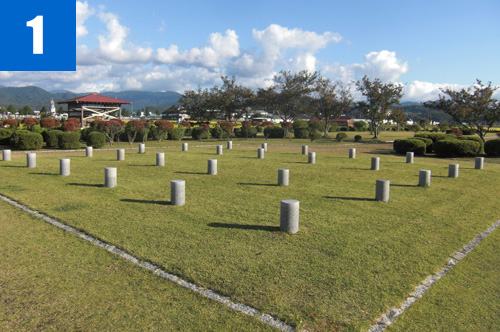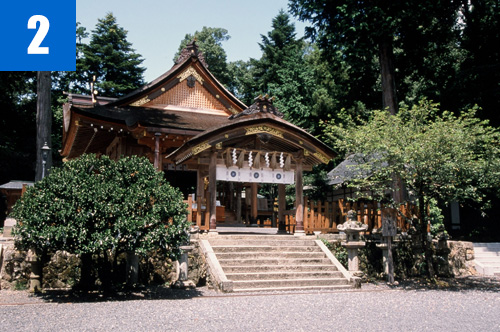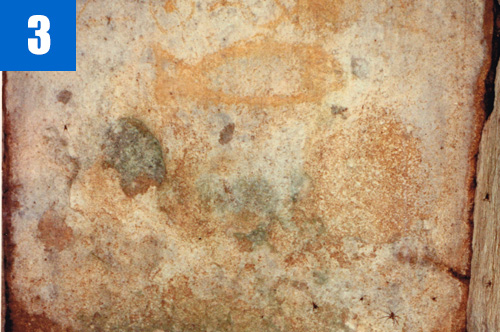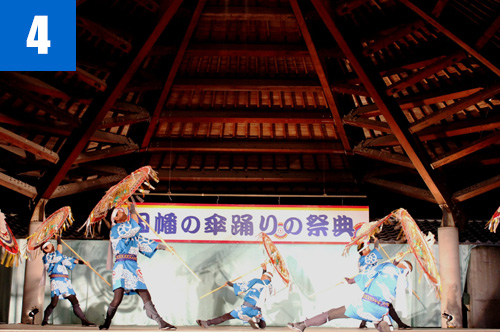From the Nara Period to the Heian Period, the government office of Inaba was located in the area of the present-day Kokufu Town. There are many historical sites and tumuli in and around Kokufu Town. In and near the area of Miyanoshita, you can observe the strata formed on the bottom of the sea in the era when the Sea of Japan was formed (the Fuganji Formation), from which fossils have been found.
(1)The Ruins of the government office of Inaba
There are ruins of the government office from the Nara Period to the Heian Period. The last poem in Manyoshu was composed by Otomo no Yakamochi, when he was in his office as the governor of Inaba. It is believed that Manyoshu was compiled in Inaba.
(2)Ube Shrine
This is a large shrine that was mentioned in Engishiki Jinmeicho, a book of a list of shrines compiled in the 10th century. It is the most important shrine in the domain of Inaba. This shrine honors Takeuchi no Sukune, who is worshipped as a god of longevity. Lords of the Tottori Domain worshipped at this shrine. The Shishimai dance performed at the annual festival of this shrine is designated as an intangible folklore cultural asset by Tottori Prefecture.
(3)Kajiyama Burial Mound
This tumulus is believed to have been built in the late Kofun Period in the middle of the seventh century. In 1978, a mural was discovered on the back wall of a horizontal stone chamber built with tuff blocks. Currently, the stone chamber is closed to preserve the mural, and is opened to the public once a year.
(4)Inaba Umbrella Dance Festival
At this festival, groups from eastern Tottori as well as groups from other prefectures perform traditional umbrella dances. Local groups of women and children also show their performances. Dancers use their colorful umbrellas with long handles as if they were swords. This dance is said to have originated as a dance to pray for the rain in the Edo Period. In this spectacular dance, dancers rotate their umbrellas to songs, ringing a hundred bells hanging from their umbrellas.





